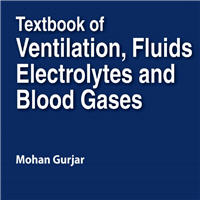Tag: hypoxemia
Weaning Failure Prediction Using Electrocardiographic Time-frequency Analysis and Respiration Flow Signals
Weaning patients from mechanical ventilation (MV) is a crucial process that requires meticulous assessment of their ability to breathe independently without ventilatory assistance. Spontaneous breathing test (SBT) is... read more
NHF Oxygen During Apnoea on Hypoxemia and Intubation Success in Pediatric Emergency and ICU
The use of nasal high-flow (NHF) during emergency intubation in children did not result in a reduction in hypoxemic events or an increase in the frequency of successful intubation on the first attempt. However, in the... read more
Nebulized Long-Acting Bronchodilators to Treat ARF in an Older Patients
Although long-acting bronchodilators are not approved to treat acute respiratory failure (ARF), the older adult in this case clinically improved after three doses of revefenacin and arformoterol. Additional studies are... read more
Early Weaning From Invasive Mechanical Ventilation via HFNO vs. Conventional Weaning in ARF Patients
In patients with resolving acute hypoxemic respiratory failure (ARF), early extubation with high flow nasal oxygen is feasible and provides a better alternative to conventional weaning from invasive mechanical ventilation,... read more
Atypical Presentation of Pulmonary Embolism in Patients with Refractory Hypoxemia and Dyspnea
Pulmonary embolism (PE) should be strongly considered in patients presenting with refractory hypoxemia and dyspnea, even in the absence of clinical signs of deep vein thrombosis (DVT). This study highlights the importance... read more
The Advanced Ventilator Book
The Advanced Ventilator Book is a companion to the best-selling The Ventilator Book and is written for clinicians who already have a solid foundation in the basics of mechanical ventilation. It goes beyond the ventilator... read more

Textbook of Ventilation, Fluids, Electrolytes and Blood Gases
The Textbook of Ventilation, Fluids, Electrolytes and Blood Gases encompass essential topics for which thorough education and training is a must for any clinician who manages these patients. This book has four sections, each... read more

Establishment and Validation of a Risk Prediction Model for Sepsis-Associated Liver Injury in ICU Patients
This novel nomogram effectively predicts SALI risk in sepsis patients by integrating readily available clinical parameters. While external validation is needed, the model shows promise as a practical tool for early risk stratification,... read more
Toward Precision Medicine in ARF
Acute hypoxemic respiratory failure (AHRF) is one of the leading causes A for admission to the ICU. Acute respiratory failure (ARF) is defined as the inability of the respiratory system to meet the oxygenation and ventilation... read more
Evaluation Effects of Nebulized Hypertonic Saline and Nebulized Corticosteroids in Patients with ARDS
Acute respiratory distress syndrome (ARDS) is a common clinical syndrome of acute respiratory failure as a result of diffuse lung inflammation and oedema manifested by hypoxemia and stiffness in the lungs. This study... read more
Mini Bronchoalveolar Lavage vs. Endo-Tracheal Aspirate in Diagnosing Bacterial Pneumonia in ICU
This study supports the use of endotracheal aspirate (ETA) as a cost-effective and efficient alternative to mBAL for the diagnosis of pneumonia in intubated ICU patients, particularly in settings where resources are limited.... read more
Oxygenation Indices and Early Prediction of Outcome in Hypoxemic Patients with COVID-19 Pneumonia Requiring NIV Respiratory Support in Pulmonary Intermediate Care Unit
Oxygenation indices (OI) showed different effectiveness in predicting NIRT failure within 24 h of treatment in COVID-19 related pneumonia. This may be due to the multi-factorial pathophysiology of hypoxemia. Our study... read more
Impacts of Initial ICU Driving Pressure on Outcomes in Acute Hypoxemic Respiratory Failure
Driving pressure (DP) is a marker of severity of lung injury in patients with acute respiratory distress syndrome (ARDS) and has a strong association with outcome. However, it is uncertain whether limiting DP can reduce... read more
Risk Factors for Secondary Organizing Pneumonia and Acute Fibrinous and Organizing Pneumonia in Patients with COVID-19 Pneumonia
Based on our findings, we observed that age ≥50 years, diabetes mellitus, and severe hypoxemia on admission (SpO2 ... read more
The Pathophysiology of Happy Hypoxemia in COVID-19
The novel coronavirus disease 2019 (COVID-19) pandemic is a global crisis, challenging healthcare systems worldwide. Many patients present with a remarkable disconnect in rest between profound hypoxemia yet without proportional... read more
Adjusting risk of AKI for Time on Controlled Mechanical Ventilation in ARDS
The authors expressed concerns that the study did not account for certain key covariates, such as septic shock, right heart failure, or hypoxemia, which are believed to influence the development of AKI. We would like... read more
Oxygen Therapy and Noninvasive Respiratory Supports in Acute Hypoxemic Respiratory Failure
Whereas oxygen supplementation should be initiated for patients with acute hypoxemic respiratory failure defined as PaO2 below 60 mm Hg or SpO2 ... read more
Optimizing Oxygenation For Tracheal Intubation in Critically Ill Patients
Tracheal intubation (TI) is a common procedure frequently performed in critically ill patients and is an integral part of emergency airway management (EAM). However, it carries inherent risks and can significantly impact... read more
Oxygen Therapy in Acute Hypoxemic Respiratory Failure
Although largely used, the place of oxygen therapy and its devices in patients with acute hypoxemic respiratory failure (ARF) deserves to be clarified. The French Intensive Care Society (Société de Réanimation de Langue... read more
A prediction model for nonresponsive outcomes in critically ill patients with ARDS undergoing prone position ventilation
In this study, a risk prediction model for nonresponse to prone position ventilation in acute respiratory distress syndrome (ARDS) patients was constructed, which demonstrated good predictive value and clinical utility. Early... read more
Navigating the Complexity of ECMO and Positioning in ARDS Treatment
We read with great interest the network meta-analysis by Sud et al. comparing venovenous extracorporeal membrane oxygenation (VV-ECMO), prone positioning, and supine mechanical ventilation in patients with severe hypoxemic... read more
Noninvasive Ventilation for Preoxygenation during Emergency Intubation
Among critically ill adults undergoing tracheal intubation, preoxygenation with noninvasive ventilation resulted in a lower incidence of hypoxemia during intubation than preoxygenation with an oxygen mask. Among the 1,301... read more









